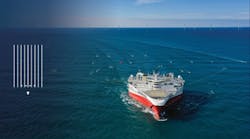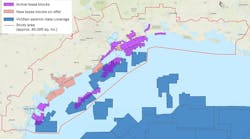TGS, Viridien commence Laconia Phase III OBN survey in the Gulf
The Laconia Phase III survey will also utilize Viridien’s elastic full-waveform inversion and reverse time migration imaging technologies to deliver seismic data to support both exploration and development activities.
"Outstanding early-out results from Laconia Phase I clearly demonstrate the power of Viridien’s industry-leading elastic full-waveform inversion imaging technology for setting new benchmarks for subsalt imaging and reservoir delineation," Viridien stated in its June 19 news release.
"The combination of very-long-offset OBN and the low-frequency Sercel Tuned Pulse Source (TPS) provides significantly deeper diving-wave penetration for E-FWI to resolve the complex salt geometries and sediments, producing a step change in subsalt imaging and highlighting exploration opportunities in the Paleogene trend with greater certainty."
Fast-track data from Laconia Phase I is available, and fast-track data from Laconia Phase II is scheduled for August.








